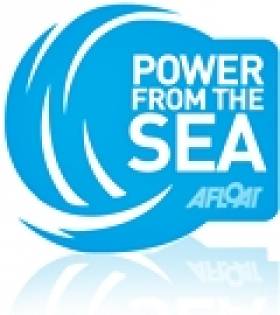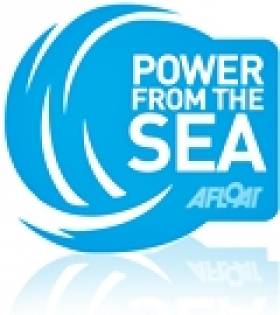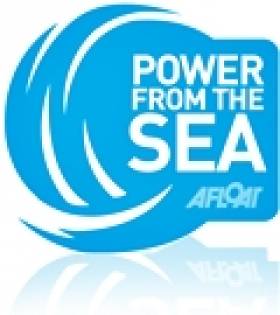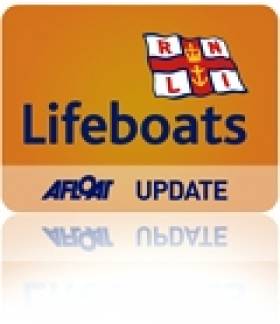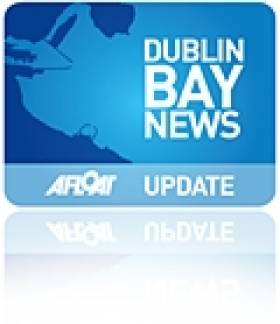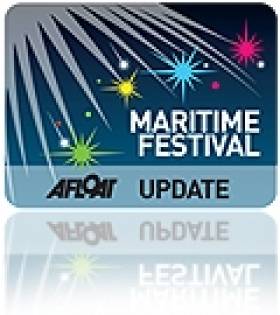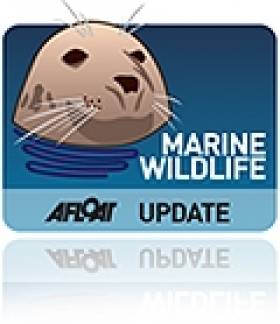Displaying items by tag: Power from the Sea
New Marine Research Centre Means Jobs Boost For Cork
#MarineResearch - Up to 77 jobs may be be supported by a new €29 million research centre that's set to put Ireland at the cutting edge of the marine energy sector, as The Irish Times reports.
The SFI Research Centre, Marine Renewable Energy Ireland (MaREI) at University College Cork (UCC) will be part of the Irish Maritime and Energy Resource Cluster (IMERC), which had its annual conference in Cork Harbour last month.
Funded by €19 million from the Department of Jobs, Enterprise and Innovation via the Science Foundation Ireland (SFI), with €10.5 million more coming from industry partners, the new centre has the potential to make Ireland "an international focal point for the marine renewable industry", according to Research Minister Sean Sherlock.
Scientists at the centre will be working on the likes of new offshore wind, wave and other marine energy devices and related infrastructure, as well as new technology and materials to survive tough ocean conditions.
This summer Taoiseach Enda Kenny helped turn the sod on the Beaufort Building at UCC, which will be the flagship development of IMERC and brings together the Hydraulics and Maritime Research Centre (HMRC), Coastal Marine Research Centre (CMRC) and the Sustainable Energy Research Group (SERG) under one roof.
Arklow Marine Launch 19m Offshore Wind-Farm Service Vessel
#WFSVlaunch- A third offshore Wind-Farm Service Vessel (WFSV) was launched in late September from Arklow Marine Services boatyard.
The 19m newbuild vessel is the first of a new design which is intended for the upcoming Round 3 offshore sites for the Renewable Offshore Industry in the U.K.
The WFSV has an overall length (LOA) of 20.75m and a beam of 7.36m. The vessel is powered by twin MAN main engines. Each engine develops 1,000 BHP and are coupled to twin Rolls Royce FF550 water jets.
A sprint speed of 30 knots and a service speed of 25 knots. Sea-trials were scheduled prior to the WFSV's introduction into operating at one of the UK's burgeoning new offshore wind -farm sites.
Wind-Farm Service Vessel Completes Another UK Based Charter
#WindFarmCraft – Wicklow based Island Shipping's 17 metre Wind-farm Service Vessel (WFSV) Island Panther has completed another charter in the North Sea.
Island Panther had been working out of Hartlepool for a solid 75 days and recorded a 100% reliability. The WFSV had been transporting Siemens technicians in the final construction stages of EDF's 62 MW Teeside Offshore Windfarm.
Island Panther combines industry leading characteristics through its construction, hull shape, revolutionary bow-fendering and highly maneuverable waterjet propulsion.
This enables the craft to perform operating a comfortable transit to and from the worksite for offshore wind-farm personnel.
Russians Propose Tidal Power Dam For Strangford Lough
#PowerFromTheSea - Scenic Strangford Lough could be the site of an ambitious tidal power plant - if a proposal by a Russian energy firm comes to fruition.
The Belfast Telegraph reports on what it calls the "bizarre plan" to construct a dam across the lough that will link both sides by road and harness the strong tide to generate well over 1,000 gigawatt hours of green energy every year.
Martex Invest CEO Vladen Lunin is set to meet with Down District Council to outline his plans for the tidal barrage, similar to the Rance power station in Brittany.
And he hopes to sell councillors on the potential of the scheme to become a major tourist attraction for Northern Ireland.
Strangford Lough is known for having an exceptionally strong tidal current - and the Strangford Narrows are already home to Britain's first tidal power turbines, operated by SeaGen.
The Belfast Telegraph has more on the story HERE.
Island Shipping Becomes MCA Accredited Training Provider
#IslandShipping- Wicklow based Island Shipping has become a Maritime & Coastguard Agency (MCA) accredited course provider.
Island Shipping is to deliver the highest levels of service, safety and efficiency in response to the needs of the evolving work-boat and crew-boat sectors.
The substantial increase in workboat / wind-farm support vessel (WMSV) activity in the offshore wind farm market, made it clear to Island Shipping that there is a requirement for a dedicated seafarer training programme. This has led to a Workboat Operations Training programme (of a 10 module duration) which is currently under development.
Island Shipping is in the process of running these training programmes for its own seafarers and has begun to train employees of other relevant organisations. All of the company's Workboat Operations Training courses are MCA approved.
The course programme covers wind farm transfer vessel training, navigation and watch-keeping, stability, towing, anchor handling and safety management on-board. For further information visit www.islandshipping.co.uk/training/
Belfast Harbour’s New Wind Terminal to Bring Huge Rewards
#DONGenergy - Belfast Harbour's new wind terminal assembly facility has created a fantastic opportunity for further inward investment, according to the head of one of the companies making turbines in the city.
Keith Anderson, chief corporate Officer of ScottishPower, was speaking as the firm's parent company Iberdrola reported first half earnings of €4.1bn (£3.5bn).
In Belfast, Scottish Power and Danish energy giant DONG energy currently sublet a a 50-acre terminal, the largest single investment in Belfast Harbour's 400-year history and the first purpose-built offshore wind installation and pre-assembly harbour in the UK or Ireland.
For more on this story The Belfast Telegraph reports.
Crash With Turbine Caused Strangford Lough Yacht Dismasting
#RNLI - A collision with a tidal turbine was to blame for the incident that caused the dismasting of a yacht in Strangford Lough on Sunday 9 June.
As reported yesterday on Afloat.ie, Portaferry RNLI's lifeboat crew was dispatched to the stricken yacht in the narrows of Strangford Lough close to the SeaGen water turbine.
The local RNLI press office confirmed that three men and a teenage boy were on board the 37ft yacht at the time - though BBC News says that only three people were rescued, including a child.
The SeaGen installation in Strangford Lough was accredited by Ofgen as Britain's first tidal power plant, as previously reported on Afloat.ie.
#DublinArray - A model of the proposed Dublin Array wind farm for Dublin Bay will not now go on display at Dun Laoghaire Public Library as reported yesterday.
Cllr Fitzpatrick has tweeted Afloat.ie this morning to say: 'A model of the Dublin Array proposal will NOT be on display in Dún Laoghaire library tomorrow.Apologies'
Submissions from the public on the proposals will be accepted before Saturday 1 June.
As previously reported on Afloat.ie, the Dublin Array scheme would comprise 145 turbines standing 160m high, situated some 10km from the coast on the Bray and Kish Banks in Dublin Bay.
Galway Expects Crowds For First Sea Festival
#Festivals - "Tens of thousands" of visitors are expected to flock to the City of the Tribes later this month for the first Galway Sea Festival over the June bank holiday weekend, according to the Galway Advertiser.
Dubbed the 'Mini-Volvo' by locals, the four-day event from 31 May till 3 June is hoped to recreate the celebratory atmosphere of last summer's successful Volvo Ocean Race finale, with a wide range of events both on and off the waters of Galway Bay.
Highlights include the festival regatta led by the Galway Bay Sailing Club's parades of sail on the Friday and Saturday evenings, and a traditional boat regatta by Badoiri na Cladaigh.
Watersports enthusiasts can get a taste of canoeing, diving, sea kayaking and windsurfing over the weekend, which also coincides with World Oceans Day - with family-friendly activities at the Galway Atlantaquaria on Sunday 2 June - and the International Canoe Polo Championships at Claddagh Basin.
Preceding the festival on Thursday 30 May will be the Bright Blue Sea Conference, a major international symposium on marine science, renewable energy, the environment and the 'blue economy'.
Last month it was reported that the Galway Sea Festival received the financial backing of Galway City Council, spurred by its aims to promote Galway as a maritime destination or commerce and tourism.
The Galway Advertiser has much more on the festival HERE.
NI Marine Bill Progress Marks 'Turning Point'
#MarineWildlife - The Northern Ireland Environment Minister says the new Marine Bill put before Stormont marks a "turning point" for the North.
As 4NI reports, this week saw the fourth stage of the Marine Bill in the NI Assembly as well as the launch of a consultation strategy for Marine Protection Areas (MPAs).
Should it be enacted in legislation, the Marine Bill - strongly supported by the RSPB among others - would give the Assembly powers to select and manage Marine Conservation Zones (MCZs) to safeguard the North's marine biodiversity.
Minister Alex Attwood commented: "Northern Ireland’s seas are home to some of the world's most spectacular wildlife and habitats, and have the potential to power our nation through wind and wave and create thousands of new jobs.
"We have reached a turning point and must modernise in order to meet increasing and competing demands on our seas."
The Marine Bill also provides for the creation of a National Maritime Plan which covers all aspects of the marine environment from wildlife to investment in tidal and offshore wind power.
4NI has much more on the story HERE.




























